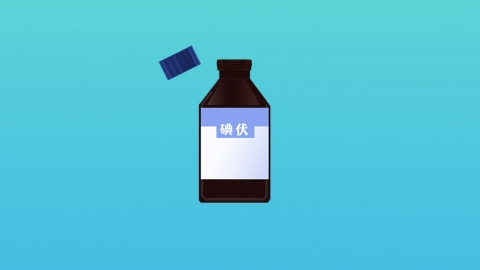What are the medicinal solutions for cleaning wounds?
Generally, antiseptic solutions for cleaning wounds include povidone-iodine, alcohol, hydrogen peroxide solution, normal saline, and chlorhexidine solution. It is recommended to use these under the guidance of a physician. Detailed explanations are as follows:
1. Povidone-Iodine
Povidone-iodine contains iodine and a surfactant, which can kill bacteria, fungi, and viruses. It has minimal irritation to the skin and mucous membranes and is suitable for disinfection of general wounds, surgical incisions, and mucous membranes. However, it is contraindicated for individuals allergic to iodine and should not be used together with red mercury solution to avoid the production of toxic substances.

2. Alcohol
Alcohol kills microorganisms by denaturing proteins and is effective for disinfecting intact skin. Due to its strong irritant properties, it should not be directly applied to wound interiors, mucous membranes, or broken skin, as this may cause severe pain and impair tissue healing.
3. Hydrogen Peroxide Solution
Upon contact with wounds, hydrogen peroxide releases oxygen and forms foam, which helps remove necrotic tissue and pus. It has both antibacterial and debriding effects, making it suitable for heavily contaminated wounds with pus or necrotic tissue. However, it may irritate fresh granulation tissue, and normal saline irrigation is recommended after disinfection.
4. Normal Saline
Normal saline has a composition similar to human body fluids and does not possess bactericidal properties. However, it effectively cleans foreign bodies, blood clots, and secretions from wounds and helps maintain a moist wound environment. It is suitable for initial cleaning of all types of wounds, especially mucosal wounds or individuals sensitive to other disinfectants.
5. Chlorhexidine Solution
Chlorhexidine is effective against both Gram-positive and Gram-negative bacteria. It has minimal irritation and is suitable for disinfection of skin, mucous membranes, and wounds. It can also be used as a mouth rinse to prevent infections. However, it has limited efficacy against spores and viruses, and its effectiveness may be reduced when used with anionic surfactants such as soap.
When selecting a wound-cleaning solution, appropriate choices should be made based on the type, degree of contamination, and location of the wound. Allergic reactions should be monitored during use, and if symptoms such as redness, swelling, or itching occur, discontinue use immediately and seek medical attention.










